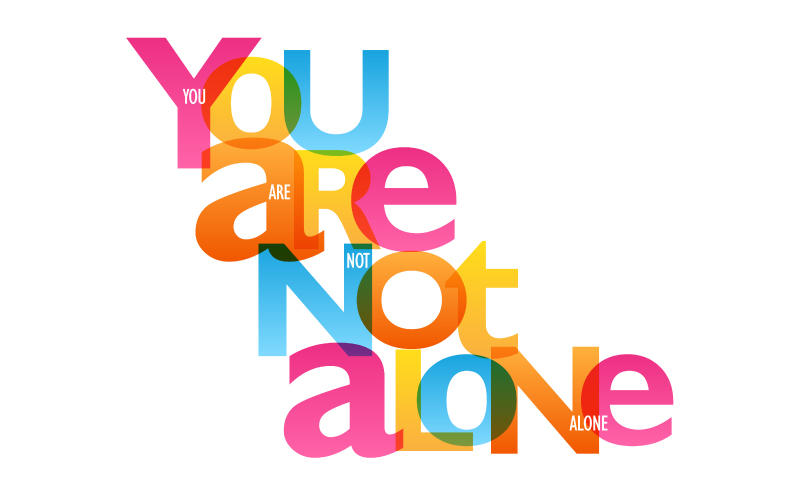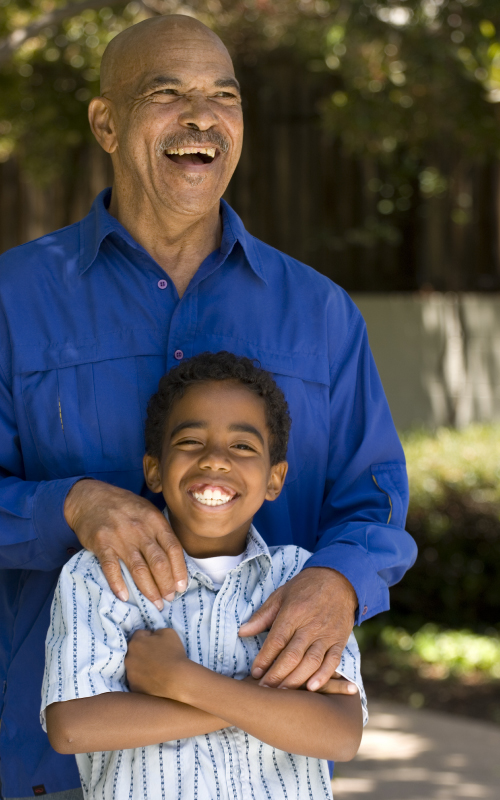TxSSC
A Parent's Guide to School Safety Toolkit
3.8 Suicide Prevention

The number of children and adolescents in the United States who were admitted to children’s hospitals for thoughts of suicide or self-harm more than doubled from 2008-2015. With suicide now being the second most common cause of death for people between the ages of 10-24, it is important to know the warning signs for suicide. According to the National Alliance on Mental Illness (NAMI), 90% of people who died by suicide had signs of a mental illness at the time of their death; however, these disorders had not been recognized, diagnosed, or adequately treated. The good news is that suicide can be prevented by knowing and recognizing the signs and risk factors and connecting people to help.
Suicide impacts all demographics; people of all ages can be at risk. If a person expresses a desire to harm or kill themselves or others, take it seriously and do not minimize or dismiss their statements or behaviors as “attention seeking,” even if there is a history of similar prior statements or behaviors. Young people will sometimes say or do things to see if anyone truly cares about them, is paying attention, or whether anyone will help them.
Although the motives for suicide and homicide are different, a person who is suicidal can become homicidal and vice versa.
Suicide is not a typical response to stress.
What can I do?
Parents, along with educators and peers, should be aware of the risk factors, behaviors that may serve as warning signs, and how and where to seek help. Maintain communication with your child’s school, including your child’s teacher, counselor, assistant principal, or any other trusted school staff member that you have established a positive relationship with. They can alert you to any warning signs they may witness in your child, and you can work as a team to support your child through difficult times and situations.
Warning signs may include:
-
Feeling like a burden.
"You have too much going on without worrying about me. All I do is make your life hard.”
-
Desire to die or feeling trapped.
"I wish I weren’t here anymore.” “I have nothing to live for.” “There is no way out of this.”
-
Hopelessness (This is one of the biggest risk factors).
"Things will never get better or change.” “I have no future.” “It is too late now.”
“I will never be happy again.” -
Helplessness
"There is nothing that I can do to make this better.” “No one can help me.”
- Preoccupation with death, researching ways to die, or collecting means to carry out their death, for example, Tylenol or a gun.
- Seeking revenge.
-
Talk of suicide or suicide plans, including online posts.
"I am going to take a bottle of Tylenol tonight.”
-
Changes in typical behavior patterns, appearance, or emotional state.
- Increased anxiety, anger, agitation, or rage.
- Increased substance use.
- Isolating or withdrawing from friends and family.
- Acting or behaving recklessly.
- History of suicide attempts.
- Increase in self-harm behaviors.
If these behaviors are observed, you should:
- Remain calm and be ready to listen.
- Ask your child if they are thinking about suicide (and/or homicide).
- Avoid being accusatory and judgmental.
- Reassure your child that help is available.
- Provide constant supervision and do not leave your child alone.
- Keep your child safe; remove all means to self-harm, attempt suicide, or hurt others.
- Connect your child to help and access available supports.

Options for connecting your child to help include:
- Talking with your child’s medical doctor. The doctor can rule out any medical concerns, and can screen for basic mental health concerns, including depression and anxiety.
- Contacting a community mental health professional, for example, a Licensed Professional Counselor (LPC), Licensed Clinical Social Worker (LCSW), or a Psychologist (Ph.D. or Psy.D.), for an evaluation. If required by insurance, you can ask for a referral from your child’s doctor. If finances are a concern, many churches, synagogues, or local mental health agencies may offer sliding scale or reduced fees.
Other things to know:
- Never promise confidentiality.
- Be willing to listen and allow emotional expression.
- Reassure them that help is available.
- Avoid talking about suicide as a selfish or stupid decision, that it is cowardly or weak, or that it is a choice.
- Suicide contagion is real. It is not contagious like a virus, but how we speak about or portray suicide can increase the risk for others to die by suicide. Have increased awareness if a peer, friend, or family member has recently died by suicide.
- Suicidal thoughts and actions are signs of extreme distress, not harmless bids for attention; they should not be ignored. Suicide can be an impulsive decision, which is another reason to take all talk of suicide seriously.
- Program the number for the National Suicide Prevention Lifeline in your phone: 1-800-273-TALK (8255)
- The Lifeline provides 24/7, free and confidential support for people in distress, prevention and crisis resources for you or your loved ones, and best practices for professionals.
Is non-suicidal self-injury (NSSI) the same as suicide?

Non-suicidal self-injury (NSSI), also known as self-harm, self-mutilation, or cutting, is the deliberate, self-inflicted destruction of body tissue, done without suicidal intent. Although NSSI is done without suicidal intent, the behaviors can escalate to suicide. The average age of onset for NSSI is between 12 and 14 years old; it is most common with adolescents and young adults, but there are very young children who self-injure. NSSI often co-occurs with another mental health disorder, such as anxiety or depression.
NSSI is a powerful communicator of emotional pain. It is sometimes used to cope with overwhelming emotions such as anger, guilt, or sadness or to express feelings too difficult to put into words. Other reasons people give as to why they self-harm is that it helps them have control over past pain and trauma, to punish themselves, distract them from their life, or to feel alive. It can be a learned behavior or a way to “fit in,” but use caution in assuming that is the case, as it still can be a way of asking for help. Some adolescents who self-harm explain the motive to self-harm by using the Novocain analogy. They say it (the Novocain injection) hurts initially, but then the pain (of the toothache) goes away, temporarily.

Stress may lead to increased use of NSSI behavior as a coping skill to manage overwhelming emotions. Self-harming behavior increases the adult risk of long-term behavioral health issues, risk-taking behaviors, and suicidal behavior. There is some research which shows NSSI can be an important risk factor for suicide.
Questions about any marks or injuries should be nonthreatening; remain calm and avoid overreacting or panicking, as negative reactions will minimize your child asking for help or talking with you about their behavior.
Suicidal youth will not typically seek out assistance on their own, so observing these warning signs and acting immediately are key steps in the prevention of youth suicide.
What are districts required to do?
School districts must identify methods for addressing the needs of students for suicide prevention, including a parental notification procedure. Districts must also include strategies and methods for suicide prevention in campus and district improvement plans.
Curriculum and awareness
Suicide prevention has been added to the mental health curriculum. School Health Advisory Councils (SHACs), which now include school counselors, advise and are charged with strategies and policies to raise parental awareness of warning signs for suicide, mental health disorders, and substance use disorders. By law, SHACs must now advise on curriculum for elementary, middle school, and, if applicable, high school health. Additionally, physical health and mental health are integrated in the health curriculum.
What should I know?
It is important to talk about all aspects of health with your children, including behavioral health. Communicate in a simple and straightforward manner. They are looking to you for how they should react, so if you appear to be uncomfortable, they may see it as a taboo topic, or one they should feel ashamed of. Have conversations beyond asking about their teacher, school day, or homework, and ask open-ended questions (questions that cannot be answered simply by saying yes or no.) Examples of open-ended questions include:
- What are three things I don’t know about you?
- If you could change something in your life, what would it be?
- What do you like about your friends?” or “What was the best (or worst) part of your week?
Sometimes children are so used to answering “I don’t know” to a question that it may take a few seconds or minutes for them to think about an answer. Be patient and let them know that you care about them and that you will wait for an answer other than “I don’t know,” or “I’m fine.”

If you notice that your child is overwhelmed, stressed, sad, anxious, or not acting like themselves, ask your child about it. Talk with your child about what is going on in their world, whether they have anything that is concerning them, how they are feeling, and that you care about them and want to hear what is weighing on their heart or mind. You can begin these conversations by simply asking them, “You look (sad) today. What is going on?” or “You look (sad) today. What happened?”
Do not ignore, minimize, or dismiss your observations. If they say they are okay, but you do not believe them, continue to talk with them, encouraging them to open up by talking about what you are noticing.
Be sure to listen to your child and avoid judgment, threats, or ultimatums. Children and adolescents are keen observers of the behaviors of adults in their lives, noticing whether the adult (you, teachers, coaches, etc.) keeps their word, can be trusted, and whether they are genuine. Are your actions consistent with what you tell your child? If you tell your child that you care about them, but you rarely talk with them, or when they come to you with a problem, you do not look up from your phone or computer, they will believe you do not care. This is also true with how you react. If you are quick to minimize, dismiss, or talk poorly about their friends, relationships, problems, or experiences, they will believe you do not care about them.

Model healthy behaviors, both for physical health and for mental health, including talking about mental health openly, learning from your mistakes, taking care of your health, and seeking therapy when it is needed.
Assure your child that you are on their side and that you are a team. They can tell you anything, and you will work through any problems together.
If you have a family history of, or your child has a history of mental or behavioral illness, especially depression, anxiety, substance use, suicide attempts, suicidal thoughts, or self-harm, this should be monitored closely by a mental health professional.
It may be helpful to ask, “Do you want me to just listen, or do you want me to fix it?” When your child talks about something they are going through, it can be hard to listen to their experience and not want to fix it. Resist the urge to offer solutions. From your child’s perspective, offering solutions may feel like you do not care about them or that you are not truly listening to them, but that you just want to fix it.
What Should My Child Know?
Suicide and homicide are not something to minimize, joke about, or tell someone to do. Ending a life is serious.
If your child knows about someone who is having suicidal (or homicidal) thoughts, your child needs to tell an adult and get help for that person. It can be overwhelming to ask for help when experiencing anxiety, depression, or suicidal thoughts; that is why it is important to seek help FOR that person, rather than wait for that person to ask for help.
Suicide is never the answer for anything they are going through.
They are not alone. If your child or a peer needs someone to talk to, they can contact the National Suicide Prevention Lifeline at: 800-273-8255.
Social media can make it appear like everyone else has a better or easier life. Social media shows highlights of other peoples’ lives; it is not reality. People craft images and content they want others to see. They do not post or write about their worst days or experiences.
The reality is that there are cycles for everything in life. Know that when times are tough, or things feel overwhelming, to hang in there because it will get better. Sometimes the “better” comes the very next day, sometimes it is a month away, and sometimes it may take a bit longer, but it will get better. Suicide is never the answer.
Resources:
- Preventing Youth Suicide: Tips for Parents and Educators (English and Spanish)
- Suicidal Thinking and Threats: Helping Handout for Home
- TEC 28.004 | SHAC Responsibilities
- Having a Conversation About Suicide With Your Children
- American Foundation for Suicide Prevention
- National Suicide Prevention Resource Center
- National Alliance on Mental Illness (NAMI)
- National Suicide Prevention Lifeline
NSSI Resources:
- Child Mind Institute: Help for Cutting and Other Self-Injury
- Crisis Text Line: Recovering from Self-Harm
- Mental Health America: Self-Injury and Youth